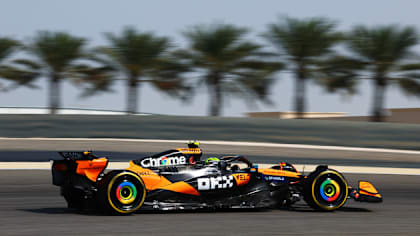
Technical
TECH TUESDAY: Why Monaco proved tough for Mercedes – and why Silverstone could be their next best bet

Share

Mercedes didn't enjoy the same pace in Monaco that they did in Spain. Mark Hughes examines why – and looks ahead to upcoming Grands Prix to see where the Silver Arrows could make up ground.
“I kind of expected it,” said Lewis Hamilton the Mercedes W13’s poor performance at Monaco after the promise of Barcelona. “We weren’t very good in low-speed [sections] in last race anyway. In the race it was OK but no on a single-lap. So we anticipated it would be difficult here. But it’s worse than we anticipated because of the bumps, it’s just super-bouncy for us, everywhere, slow, medium and high speed. Very challenging.”
READ MORE: Russell takes away a 'lot of positives' after extending top-5 streak in Monaco
This wasn’t about the aerodynamic porpoising the car suffered before Barcelona – and which was largely corrected in Spain – but another, different, consequence of the car’s very distinctive concept.
At Monaco it just didn’t have enough suspension compliance to prevent it being pounded into the ground. It was a mechanical limitation, but borne of a suspension developed around a very stiff aerodynamic platform.

The qualifying pace chart from Friday practice in Monaco
The shallower sidewalls of the 2022 tyres means the suspension has to do much more of the damping than before – and in this the Mercedes’ rear suspension looked in some difficulty at Monaco.
The car is sprung super-stiff as part of trying to keep its aero platform stable, to maximise downforce and also to limit the porpoising issue seen at faster tracks. It wasn’t feasible to run it all that much softer at Monaco, and to smother the bumps that way, possibly because there was insufficient travel in the suspension geometry to allow it.
READ MORE: Hamilton says he's ‘grateful’ to finish Monaco in P8 after close call with Ocon
This simply gave the car a different problem to that which it suffered earlier in the season, though one which was every bit as debilitating. The car was simply crashing into the ground over the bumps and the lack of compliance in the suspension became punishing.
2022 Monaco GP FP3: Hamilton almost loses the Mercedes through the Swimming Pool section in Monaco practice
But that was just the trigger point for a cascading set of compromises for the car. Trying to minimise the bottoming-out of the car as the rear suspension travel was used up led the team to increase the rear ride height even further than would normally be the case around the street track. This costs a lot of rear downforce.
But in order to be quick around such tight corners, the driver needs the front end of the car to be responsive. Mercedes reverted to their older (pre-Miami) front wing here because that gives more downforce directly on the front axle, to give that responsiveness. The front wing introduced at Miami gives better outwash, helping the rear aerodynamics and giving more total downforce, but with less directly produced by the front wing.
The old wing gave Lewis Hamilton and George Russell the initial response they needed around Monaco’s streets but probably made the rear end even more wayward than it already was when running such a big rear ride height.

Encircled is the cut-out on the post-Miami front wing-spec (top) employed by Mercedes. They used the previous spec (below) in Monaco
Without the extreme cutaway at the bottom on the endplates to give better outwash of the airflow around the front tyres and all the way down the car, the older front wing used at Monaco keeps more of that airflow for itself across its full width.
A wing produces downforce through the air pressure difference between its upper and lower surfaces. Bleeding some of the airflow away at the outboard ends – as the newer wing does – reduces that difference.
“We have poor rear downforce,” confirmed Hamilton after qualifying. “Loads of front, and nothing on the rear.”
It seems that for the W13, there just isn’t a happy Monaco set-up window within its concept and that with two slow corner tracks coming up – Baku and Montreal – it may be Silverstone before we see another Barcelona-type performance from the car.
YOU MIGHT ALSO LIKE
Report FP1: Norris sets the pace during first practice in Bahrain as six rookies join the action
News Leclerc hopeful Ferrari can ‘close the gap’ with new parts as he sets out expectations for Bahrain Grand Prix
News The six rookie drivers set to take part in FP1 at the Bahrain Grand Prix

Video WEEKEND WARM-UP: McLaren take on Red Bull in a scorching hot Bahrain while Ferrari run upgrades in a bid to join the party



